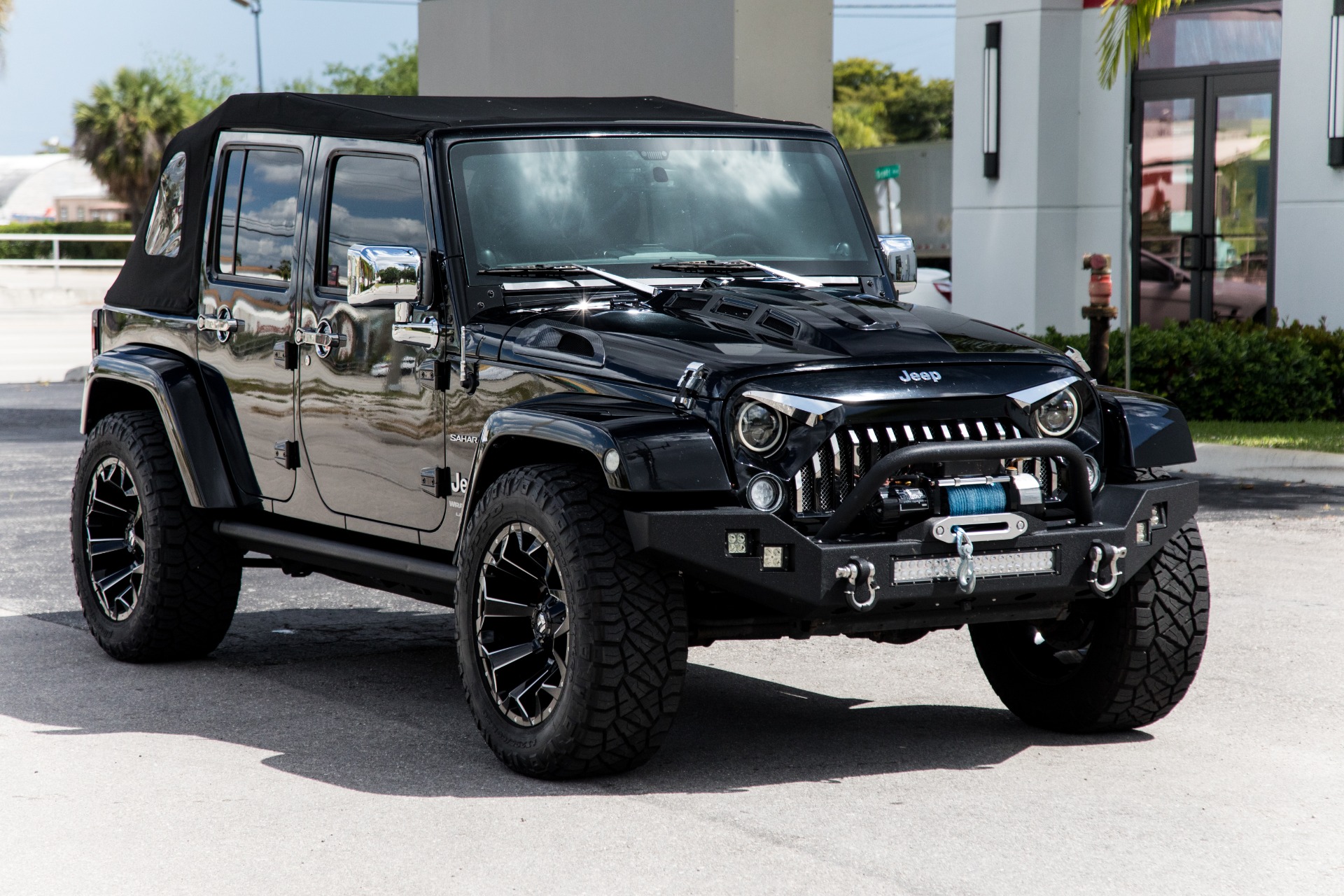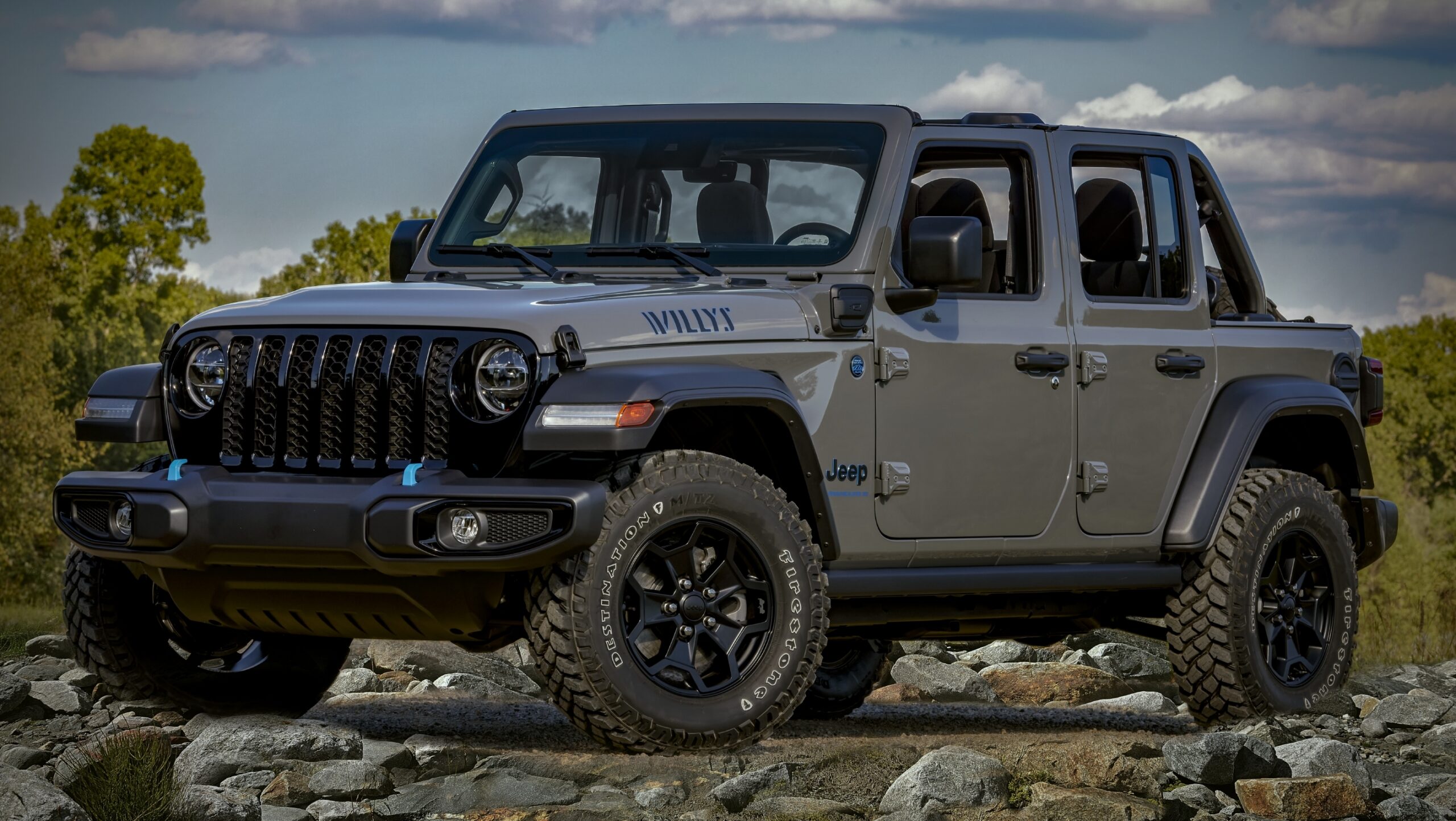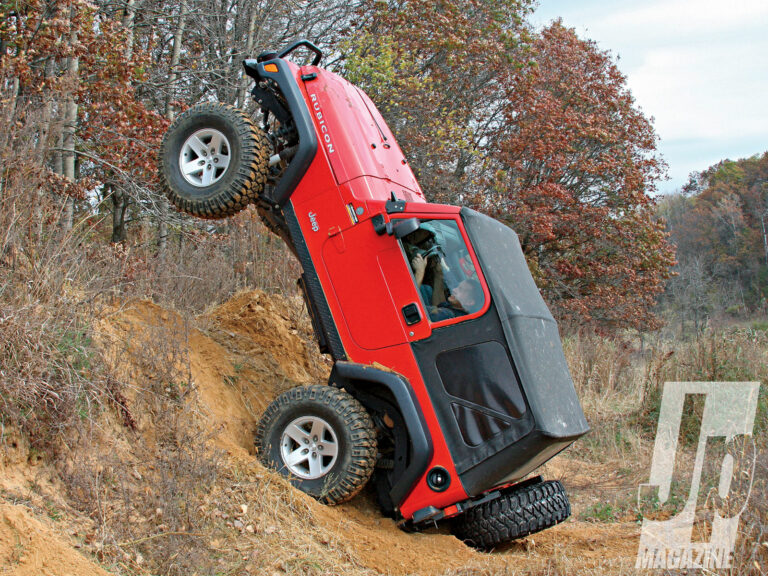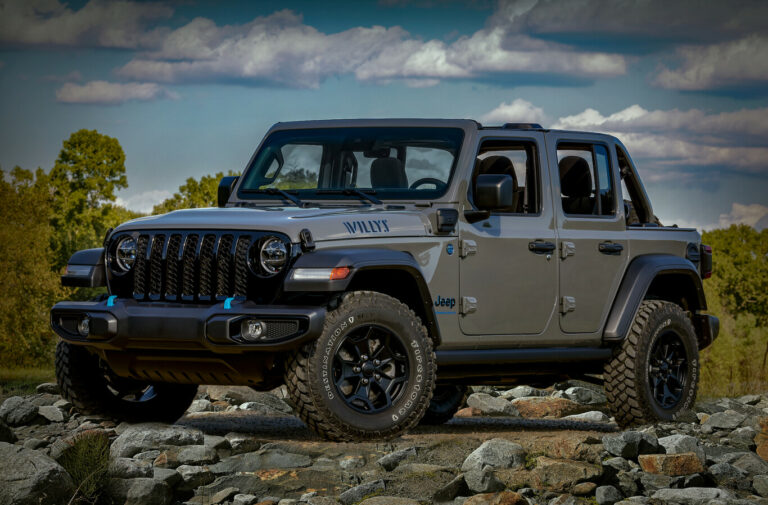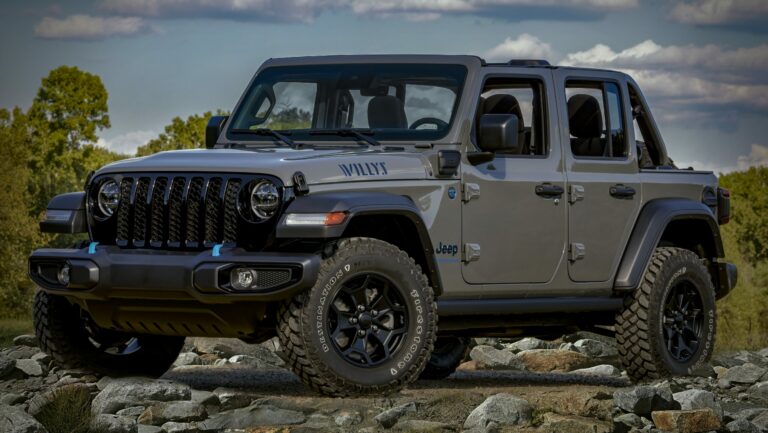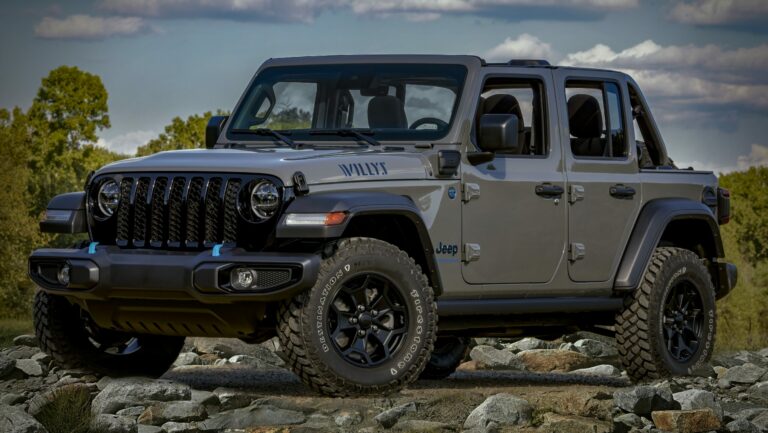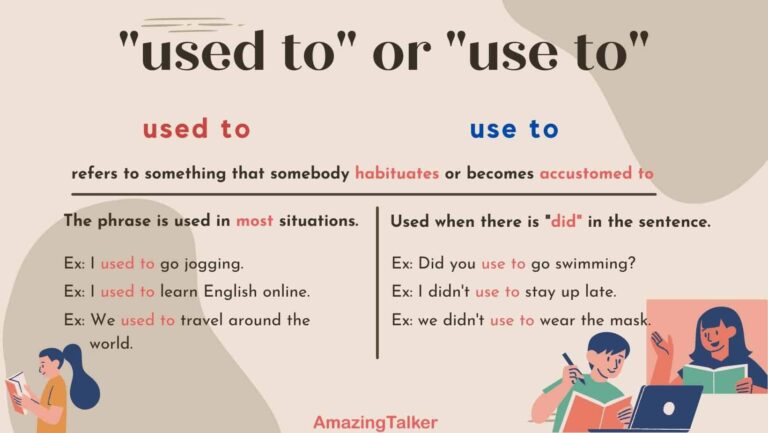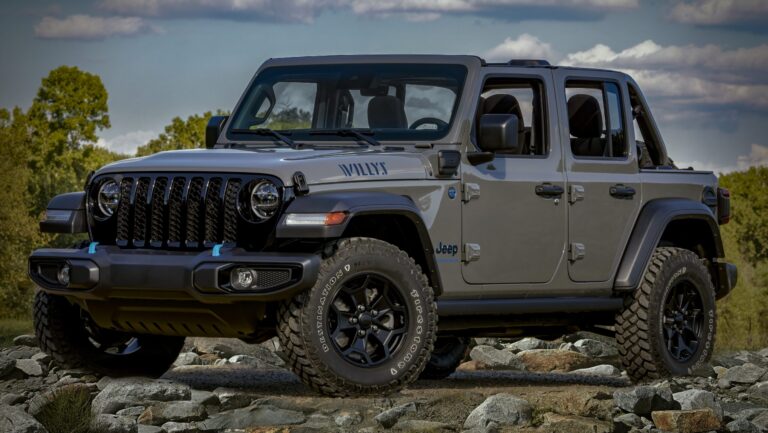Wrangler Jeep Lift Kit: Elevating Your Off-Road Experience
Wrangler Jeep Lift Kit: Elevating Your Off-Road Experience jeeps.truckstrend.com
The iconic Jeep Wrangler, a symbol of freedom and adventure, is synonymous with off-road prowess. Yet, for many enthusiasts, the factory setup is just the beginning. To truly unlock its potential, navigate more challenging terrains, or simply achieve that aggressive, commanding stance, a Wrangler Jeep Lift Kit becomes an indispensable upgrade. Far more than just raising your vehicle, a lift kit is a comprehensive suspension modification designed to enhance ground clearance, accommodate larger tires, and improve overall off-road performance and aesthetic appeal. It’s the gateway to transforming your capable Jeep into an unstoppable trail-conquering machine.
This detailed guide will delve into every facet of Wrangler Jeep lift kits, from understanding their core benefits and various types to navigating the installation process, considering crucial factors, and addressing common queries. Whether you’re a seasoned off-roader or a newcomer dreaming of bigger adventures, this article will equip you with the knowledge to make an informed decision about elevating your Wrangler.
Wrangler Jeep Lift Kit: Elevating Your Off-Road Experience
Why Lift Your Wrangler Jeep? The Benefits Unveiled
The decision to install a lift kit on your Wrangler isn’t merely for show; it brings a host of tangible benefits that directly impact its capability and appearance:
- Increased Ground Clearance: This is arguably the primary benefit. By raising the chassis, a lift kit increases the distance between the lowest point of your Jeep (often the differential or control arms) and the ground. This allows you to clear larger obstacles such as rocks, logs, deep ruts, and uneven terrain without scraping, getting hung up, or damaging vital underbody components.
- Accommodate Larger Tires: More ground clearance naturally allows for the installation of larger diameter tires. Larger tires offer several advantages:
- Improved Traction: A larger contact patch and more aggressive tread patterns provide superior grip on loose surfaces like mud, sand, or snow.
- Enhanced Flotation: Wider tires distribute the vehicle’s weight over a larger area, reducing the likelihood of sinking in soft terrain.
- Aggressive Aesthetics: There’s no denying that larger tires combined with a lift kit give the Wrangler a more rugged, imposing, and visually appealing presence.

- Enhanced Suspension Travel and Articulation: Many lift kits replace factory springs and shocks with longer, performance-tuned components. This increases the total range of motion for your suspension (travel) and allows individual wheels to move up and down independently (articulation). Better articulation keeps more tires in contact with the ground over uneven terrain, improving stability and traction on challenging trails.
- Improved Approach, Departure, and Breakover Angles: These angles define how steep an obstacle your Jeep can approach, leave, or pass over without scraping the bumpers or undercarriage. A lift kit significantly improves all three, reducing the chances of getting stuck or damaging bodywork.
- Better Visibility: A higher seating position can offer a commanding view of the road or trail ahead, helping you spot obstacles sooner.
- Aesthetic Appeal: Beyond the practical benefits, many Jeep owners simply love the look of a lifted Wrangler. It conveys capability, ruggedness, and a ready-for-anything attitude.

Understanding the Different Types of Wrangler Jeep Lift Kits
Wrangler lift kits come in various forms, each offering different levels of lift, performance, and complexity. Choosing the right one depends on your budget, intended use, and desired outcome.
-
Spacer Lifts (Budget Boosts):
- Description: These are the simplest and most affordable lift kits. They involve installing spacers above your factory coil springs (or between the spring and the spring perch) to raise the vehicle’s body. They typically provide 1 to 2.5 inches of lift.
- Pros: Inexpensive, relatively easy to install, retains factory ride quality as original springs and shocks are used.
- Cons: Offers minimal lift, does not improve suspension performance or articulation, may limit the size of tires you can comfortably run, and can put added stress on factory components.
-
Coil Spring Lifts:
- Description: These kits replace your factory coil springs with longer, often stiffer or specifically tuned, aftermarket springs. They usually come paired with longer shock absorbers to match the increased travel. Lifts typically range from 2 to 4 inches.
- Pros: Provides a true lift, can improve ride quality (depending on spring and shock choice), allows for larger tires than spacer lifts, and offers better articulation than budget boosts.
- Cons: More expensive and complex to install than spacer lifts, often requires other components like extended sway bar links and brake line extensions.
-
Short Arm vs. Long Arm Lifts:
- Short Arm Lifts (2.5 – 4.5 inches):
- Description: These kits replace the factory coil springs, shocks, and often include new, sometimes adjustable, control arms that retain the original mounting points on the frame and axle.
- Pros: Good balance of lift height and performance for most off-roaders, less complex to install than long arm kits, more affordable.
- Cons: At higher lifts (above 3.5 inches), the angle of the control arms can become steep, potentially affecting ride quality, steering geometry (caster), and articulation.
- Long Arm Lifts (4+ inches):
- Description: Designed for serious off-roaders, these kits replace the factory control arms with significantly longer ones and relocate their mounting points further back on the frame. This results in flatter control arm angles, even at extreme lift heights.
- Pros: Superior articulation, vastly improved ride quality on and off-road due to flatter control arm angles, ideal for large tires and aggressive rock crawling.
- Cons: Very expensive, highly complex installation often requiring welding and cutting of the frame, can reduce ground clearance under the relocated control arm mounts, and may require new driveshafts.
- Short Arm Lifts (2.5 – 4.5 inches):
-
Coilover Lifts:
- Description: The pinnacle of suspension performance, coilover systems integrate the coil spring and shock absorber into a single unit. They are highly adjustable for ride height, damping, and rebound.
- Pros: Unmatched performance, incredible ride quality, ultimate adjustability for fine-tuning your suspension, ideal for high-speed desert running or extreme rock crawling.
- Cons: Extremely expensive, highly custom, often requires significant fabrication and welding, not practical for most daily drivers.

Key Components of a Comprehensive Lift Kit
While simpler kits might only include springs and shocks, a comprehensive Wrangler lift kit often includes several critical components to ensure proper geometry and function:
- Lift Springs/Spacers: To achieve the desired height.
- Longer Shock Absorbers: To match the increased suspension travel.
- Adjustable Control Arms: To correct pinion and caster angles, crucial for steering stability and driveshaft health.
- Adjustable Track Bars (Front and Rear): To re-center the axles under the vehicle after lifting.
- Extended Sway Bar Links: To maintain proper sway bar geometry and prevent binding at full droop.
- Extended Brake Lines or Brackets: To prevent strain on brake lines during suspension articulation.
- Bump Stop Extensions: To prevent tires from rubbing fenders at full compression and protect shocks from bottoming out.
- Pitman Arm or Drag Link Flip Kit: For steering correction on higher lifts.
- Driveshafts: On significant lifts (3.5+ inches), the increased operating angle of the driveshafts can cause vibrations and premature wear, necessitating upgraded (e.g., CV-style) driveshafts.
- Gussets/Brackets: Reinforcement for axle mounts or other critical points.
Important Considerations Before Lifting Your Wrangler
Before you commit to a lift kit, it’s vital to consider several factors that will influence your choice and overall satisfaction:
- Intended Use: Are you a daily driver who occasionally hits light trails, a weekend warrior tackling moderate obstacles, or a hardcore rock crawler? Your use case will dictate the type and extent of the lift you need.
- Desired Tire Size: The size of tires you plan to run is a major determinant of how much lift you need. Research common tire/lift combinations for your Wrangler model (JK, JL, TJ, YJ).
- Budget: Lift kits range from a few hundred dollars for spacers to several thousand for long arm or coilover systems. Don’t forget to factor in installation costs, alignment, and potentially other necessary upgrades (tires, wheels, re-gearing).
- Installation Complexity: Spacer lifts can often be a DIY project for those with mechanical aptitude. Coil spring and short arm kits are more involved but still manageable for experienced home mechanics. Long arm and coilover kits often require specialized tools, welding, and professional expertise.
- Driveshaft Angles and Vibrations: Lifting your Jeep can change the angle of your driveshafts, potentially leading to vibrations, especially on Wranglers with two-piece rear driveshafts (like the JK). This might necessitate a Slip Yoke Eliminator (SYE) kit and a CV (Constant Velocity) driveshaft, adding significant cost.
- Steering Geometry: Lifting can affect caster (forward/backward tilt of the steering axis) and cause bump steer (unwanted steering input when hitting bumps). Adjustable control arms, track bars, and steering correction kits are essential to maintain safe and predictable handling.
- Braking Performance: Larger, heavier tires require more stopping power. You might need to consider upgrading your brakes (pads, rotors, or even caliper kits) to maintain adequate braking performance.
- Gearing: Larger tires effectively "raise" your axle gear ratio, making your Jeep feel sluggish and reducing fuel economy, especially on models with less powerful engines. Re-gearing your axles to a lower ratio is often recommended for optimal performance and efficiency with larger tires.
- Legality and Insurance: Check your local and state laws regarding vehicle lift heights. Some areas have restrictions. Inform your insurance company about modifications to ensure continued coverage.
- Warranty: Installing an aftermarket lift kit can potentially void parts of your factory warranty, especially those related to suspension, drivetrain, and steering components.
The Installation Process: What to Expect
While a detailed step-by-step guide is beyond the scope of this article, here’s a general overview of what the installation of a typical coil spring or short arm lift kit involves:
- Safety First: Always work on a level surface, use sturdy jack stands, and chock the wheels. Disconnect the battery.
- Disassembly: Remove wheels, disconnect sway bar links, brake lines (or unbolt their mounting points), shocks, and then the coil springs. You may need to loosen control arms and track bars to allow the axles to drop sufficiently.
- Component Installation: Install the new lift springs, longer shocks, extended sway bar links, and any other kit components like control arms, track bars, or bump stop extensions.
- Reconnect and Torque: Reconnect all components, ensuring proper routing of brake lines and wires. Torque all bolts to the manufacturer’s specified settings. This is crucial for safety and longevity.
- Alignment: This is the most critical step after installation. A professional alignment shop (preferably one familiar with lifted vehicles) must adjust your Jeep’s caster, camber, and toe settings to ensure proper handling, tire wear, and steering feel. Skipping this step can lead to dangerous driving characteristics and rapid tire wear.
- Test Drive: Take your Jeep for a cautious test drive, listening for any unusual noises, vibrations, or handling issues.
For anything beyond a simple spacer lift, especially if you’re not an experienced mechanic, professional installation by a reputable off-road shop is highly recommended.
Maximizing Your Lift Kit’s Performance: Tips and Maintenance
- Professional Alignment is Non-Negotiable: We can’t stress this enough. Immediately after installation, get a professional alignment.
- Regular Inspections: Periodically check all suspension components for loose bolts, worn bushings, damaged shocks, and proper driveshaft angles.
- Upgrade Supporting Components: As you increase tire size and push your Jeep harder off-road, consider upgrading other components like steering linkage (tie rod, drag link), ball joints, axle shafts, and differential covers for added strength and reliability.
- Learn Your Jeep’s New Limits: A lifted Jeep with larger tires will handle differently on-road (higher center of gravity, potentially slower acceleration, longer braking distances). Off-road, you’ll gain capability but also need to understand how the new setup affects articulation, stability, and approach/departure angles.
- Tire Pressure Management: Learn to air down your tires for off-road use to increase traction and improve ride comfort, then air them back up for road driving.
Estimated Price Guide for Wrangler Jeep Lift Kits
The cost of a Wrangler Jeep lift kit varies widely based on the type, brand, and included components. Here’s a general estimated price guide:
| Kit Type | Lift Height (Approx.) | Key Features | Estimated Kit Price Range (USD) | Estimated Installation Cost (USD) | Total Estimated Cost (USD) |
|---|---|---|---|---|---|
| Spacer Lift / Budget Boost | 1" – 2.5" | Spacers only, retains factory springs/shocks | $100 – $400 | $200 – $500 | $300 – $900 |
| 2.5" Coil Spring Lift | 2.5" | New coil springs, longer shocks, extended sway bar links | $500 – $1,500 | $400 – $800 | $900 – $2,300 |
| 3.5" Short Arm Lift | 3" – 4" | New coil springs, shocks, adjustable control arms, track bars | $1,500 – $3,000 | $800 – $1,500 | $2,300 – $4,500 |
| 4.5"+ Long Arm Lift | 4.5" – 6"+ | New springs, shocks, long control arms, frame brackets, often new driveshaft | $3,000 – $7,000+ | $1,500 – $3,000+ | $4,500 – $10,000+ |
| High-Performance Coilover | Custom | Integrated coil/shock, highly adjustable, often custom fabrication | $5,000 – $10,000+ | $2,000 – $5,000+ | $7,000 – $15,000+ |
Note: Prices are estimates and can vary significantly based on brand, specific components, regional labor rates, and additional necessary upgrades like tires, wheels, or re-gearing.
Frequently Asked Questions (FAQ) about Wrangler Jeep Lift Kits
Q1: How much lift do I need for my Wrangler?
A1: It depends on your desired tire size and intended use.
- 1-2.5 inches: For 31-33 inch tires, light trails, or aesthetic. Spacer or mild coil spring kits.
- 2.5-3.5 inches: For 33-35 inch tires, moderate to serious off-roading. Coil spring or short arm kits.
- 4+ inches: For 35-40 inch tires, aggressive off-roading, rock crawling. Short arm (with limitations) or long arm kits.
Q2: Will a lift kit void my Wrangler’s warranty?
A2: Generally, no. Under the Magnuson-Moss Warranty Act, a dealership cannot void your entire warranty simply because you installed an aftermarket part. However, if a lift kit or its installation directly causes a failure of a related component (e.g., a lifted suspension causes a driveshaft to fail), the repair of that specific component may not be covered under warranty. It’s best to discuss with your dealer beforehand.
Q3: Do I need new tires with a lift kit?
A3: Not always immediately, especially with smaller spacer lifts, but a primary reason for lifting is to accommodate larger tires. To fully realize the benefits of a lift, upgrading to larger, more aggressive tires is usually recommended and often necessary to avoid rubbing.
Q4: What is bump steer? How do I fix it?
A4: Bump steer is an unwanted steering input that occurs when your suspension compresses or extends, causing the wheels to steer without driver input. It’s often caused by incorrect steering geometry after a lift. It can be fixed by using adjustable track bars, adjustable control arms, and sometimes a drag link flip kit or high-steer kit to keep steering components parallel and at optimal angles.
Q5: Is it safe to install a lift kit myself?
A5: Simple spacer lifts can be a DIY project for those with mechanical experience and proper tools. More complex coil spring or short arm kits are challenging but doable for advanced DIYers. Long arm and coilover kits often require specialized tools, welding, and significant expertise, making professional installation highly recommended for safety and proper function. Always prioritize safety and follow manufacturer instructions precisely.
Q6: Do I need to re-gear my Jeep after a lift?
A6: If you install significantly larger tires (e.g., going from 30" to 35" or 37"), re-gearing your axles is highly recommended. Larger tires effectively raise your gear ratio, making your Jeep feel sluggish, increasing strain on the drivetrain, and negatively impacting fuel economy, especially if you have a less powerful engine or automatic transmission.
Q7: How does a lift affect my Jeep’s ride quality?
A7: It varies significantly by kit type and quality.
- Spacer lifts: Generally retain factory ride quality.
- Quality coil spring/short arm kits: Can actually improve ride quality over rough terrain due to better shocks and springs, though on-road handling might feel slightly different due to a higher center of gravity.
- Long arm kits: Often provide the best ride quality, even better than stock, due to optimized control arm angles.
- Poor quality kits or improper installation: Can lead to a harsh, bouncy, or unstable ride.
Conclusion
A Wrangler Jeep lift kit is more than just an aesthetic upgrade; it’s a transformative modification that unlocks new levels of off-road capability and adventure. From conquering challenging obstacles with increased ground clearance to accommodating larger, more aggressive tires, the benefits are clear for any serious enthusiast.
However, the world of lift kits is nuanced. Understanding the different types, their components, and the critical considerations involved is paramount. Whether you opt for a subtle spacer lift or a comprehensive long arm system, thorough research, a realistic budget, and a commitment to professional installation and subsequent alignment are key to a safe, enjoyable, and high-performing outcome. By making informed choices, you can truly elevate your Wrangler, transforming it into the ultimate off-road machine and ensuring countless memorable adventures on the trail ahead.
